 W
WAugustus George, Margrave of Baden-Baden was the ruling Margrave of Baden-Baden from 1761 till his death in 1771. He succeeded his brother Louis George and was the brother of the Duchess of Orléans. He was the son-in-law of Duke Léopold Philippe d'Arenberg.
 W
WBernhard Gustav von Baden-Durlach OSB was a Major General in the Swedish army. After his conversion to Catholicism, he was Abbot of Fulda and Kempten Abbey and also cardinal.
 W
WCount Nils Bielke was a member of the High Council of Sweden, military and politician.
 W
WMarcu Cercel, also known as Marco Cercel, Marcu-Vodă, or Marco-Voevod, was a Wallachian adventurer who served as Prince of Moldavia in July–September 1600. His father, Petru Cercel, was Prince of Wallachia in the 1580s, and alleged son of Pătrașcu the Good. This probably meant that Marcu was a nephew of Michael the Brave, who in 1599–1601 managed to control Wallachia, Moldavia, and the Principality of Transylvania, making Marcu his representative or regional co-ruler. It is not precisely known who Marcu's mother was, but she was likely Turkish and related to the Köprülüs; she may be the same as Lady Stanca, who went on to marry Aaron the Tyrant, also Prince of Moldavia.
 W
WChristian the Younger of Brunswick-Wolfenbüttel, a member of the House of Welf, titular Duke of Brunswick-Lüneburg and administrator of the Prince-Bishopric of Halberstadt, was a German Protestant military leader during the early years of the Thirty Years' War, fighting against the forces of the Imperial House of Habsburg, Habsburg Spain, and the Catholic League.
 W
WAndrea Doria was a Genoese statesman, condottiero and admiral, playing a key role in the Republic of Genoa during his lifetime.
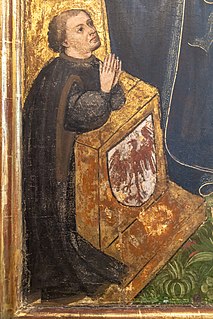 W
WFrederick was the last Burgrave of Nuremberg from 1397 to 1427, Margrave of Brandenburg-Ansbach from 1398, Margrave of Brandenburg-Kulmbach from 1420, and Elector of Brandenburg from 1415 until his death. He became the first member of the House of Hohenzollern to rule the Margraviate of Brandenburg.
 W
WCount Frederick of Solms-Rödelheim was an imperial chamberlain, war councillor and colonel in the period of the Thirty Years' War.
 W
WFrederick Wilhelm von Pfalz-Neuburg, was by birth Count Palatine of Neuburg and Imperial General.
 W
WGeorg von Frundsberg was a German military and Landsknecht leader in the service of the Holy Roman Empire and Imperial House of Habsburg. An early modern proponent of infantry tactics, he established his reputation in active service during the Italian Wars under Emperor Maximilian I and his successor Charles V.
 W
WOtto Heinrich Fugger, Count of Kirchberg and Weissenhorn (1592–1644) was promoted to be a Knight of the Order of the Golden Fleece in 1628. He was the son of Christoph Fugger von Glött, deceased 1615, the grandson of Johann Fugger, deceased 1598, the great grandson of very wealthy Augsburg city International businessman and banker Anton Fugger (1493–1560). The 16th century Fugger's, descendants of a German businessmen family tracked down to the 14th century, were the Imperial bankers with King Charles I of Imperial Spain, also Holy Roman Emperor as Charles V (1500–1558), and his brother, also Holy Roman Emperor, Ferdinand I of Habsburg (1503–1564), king of Hungary and Bohemia from 1526, emperor from 1556 by abdication of his brother Charles.
 W
WCount Georg Friedrich von Hohenlohe-Neuenstein-Weikersheim was an officer and an amateur poet.
 W
WGeorge Frederick of Baden-Durlach was Margrave of Baden-Durlach from 1604 until his abdication in 1622. He also ruled Baden-Baden.
 W
WGeorg III Truchsess von Waldburg-Zeil, also known as Bauernjörg, was a Swabian League Army Commander in the German Peasants' War.
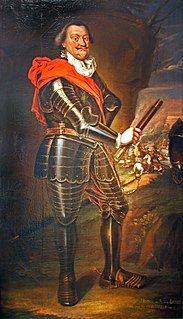 W
WGeorge, Duke of Brunswick-Lüneburg, ruled as Prince of Calenberg from 1635.
 W
WFerrante I Gonzaga was an Italian condottiero, a member of the House of Gonzaga and the founder of the branch of the Gonzaga of Guastalla.
 W
WIacob Heraclid, born Basilicò and also known as Iacobus Heraclides, Heraclid Despotul, or Despot Vodă, was a Greek Maltese soldier, adventurer and intellectual, who reigned as Prince of Moldavia from November 1561 to November 1563. He is remembered as a pioneer of the Protestant faith in Eastern Europe, a champion of Renaissance humanism, and a founder of academic life in Moldavia. Active within the Greek diaspora in several countries, he was a student of Hermodorus Lestarchus, and worked as a scribe alongside his cousin, Iakobos Diassorinos. Heraclid forged his genealogy several times, claiming to be a member of the Branković dynasty; he was more reliably related to the Byzantine nobility in Rhodes, and claimed the titular lordship of Samos. In the late 1540s and early '50s, he studied medicine at the University of Montpellier, and married a local. A duelist and alleged infanticide, Heraclid fled over the border with the Holy Roman Empire before he could be executed for murder. He was slowly won over by the Reformation, serving the Protestant princes of the Upper Saxon Circle.
 W
WHerman de Lynden, baron of Reckheim and of the Holy Roman Empire, was a military leader serving the Prince-Bishopric of Liège and the Holy Roman Empire. He led troops during the Eighty Years' War and the Cologne War. He also held several high-ranking positions, notably Governor of Cologne and Grand-Mayor of Liège.
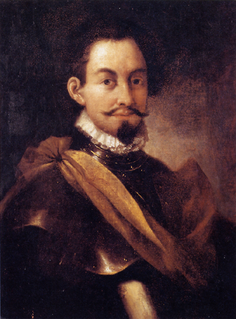 W
WPhilipp von Hutten was a German adventurer, and an early European explorer of Venezuela. He is a significant figure in the history of Klein-Venedig, the concession of Venezuela Province to the Welser banking family by Charles V, Holy Roman Emperor and King of Spain.
 W
WJohn III, Count of Nassau-Saarbrücken was a son of Count John Louis of Nassau-Saarbrücken and his second wife Catherine of Moers. He succeeded his childless brother Philip II in 1554 as Count of Nassau-Saarbrücken. He married Adelaide of Kronenkracht and Elisabeth Selz. However, his children predeceased him. When he died in 1574, Nassau-Saarbrücken fell to Nassau-Weilburg.
 W
WWilliam of Jülich was one of the Flemish noblemen that opposed the annexation policies of the French king Philip IV – together with Pieter de Coninck.
 W
WAntonio de Leyva, Duke of Terranova, Prince of Ascoli (1480–1536) was a Spanish general during the Italian Wars. During the Italian War of 1521, he commanded Pavia during the siege of the city by Francis I of France, and took part in the Battle of Pavia in 1525. After the death of Fernando d'Ávalos, Marquis of Pescara, he held further commands in Italy during the War of the League of Cognac and afterwards, finally dying shortly after attempting an invasion of Provence.
 W
WHermann Otto I of Limburg-Styrum, count of Limburg and Bronckhorst, lord of Styrum, Gemen, Wisch and Borculo, and from 1640 to 1644 advocate of the imperial abbey of Vreden, was born in 1592, and died on 17 October 1644. He was the eldest son of Jobst of Limburg Stirum.
 W
WMaximilian II, also known as Max Emanuel or Maximilian Emanuel, was a Wittelsbach ruler of Bavaria and a Prince-elector of the Holy Roman Empire. He was also the last governor of the Spanish Netherlands and duke of Luxembourg. An able soldier, his ambition led to conflicts that limited his ultimate dynastic achievements.
 W
WMaximilian Willibald of Waldburg-Wolfegg (1604–1667) was the head of the house of Waldburg-Wolfegg, military commander and the governor of Upper Palatinate for the Electorate of Bavaria. Today however he is mostly remembered as an art collector and for having founded the Wolfegger Kabinett.
 W
WNicolae Pătrașcu, Petrașco, or Petrașcu, also styled Nicolae Vo[i]evod, was the titular Prince of Wallachia, an only son of Michael the Brave and Lady Stanca, and a putative grandson of Pătrașcu the Good. His early childhood coincided with Michael's quick rise through the ranks of boyardom, peaking in 1593, when Michael became Prince and Nicolae his heir apparent. As he began a quest to emancipate Wallachia from the Ottoman Empire, Michael used his son as a party to alliances with the Holy Roman Empire and the Principality of Transylvania, proposing him as either a hostage or a matrimonial guarantee. While entering the Long Turkish War on the Christian side, Michael also negotiated a settlement with the Ottomans, again offering Nicolae as a guarantee.
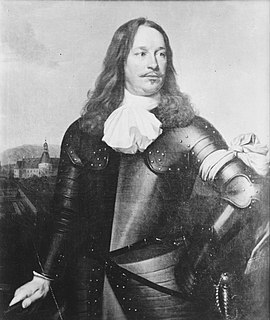 W
WOtto of Limburg-Styrum, count of Limburg and Bronckhorst, was the son of Hermann Otto I of Limburg-Styrum.
 W
WPhilip William August, Count Palatine of Neuburg was a Prince and Count Palatine of Neuburg.
 W
WJohan Rantzau was a German-Danish general and statesman known for his role in the Count's Feud.
 W
WJosias Rantzau was a Danish military leader and Marshal of France.
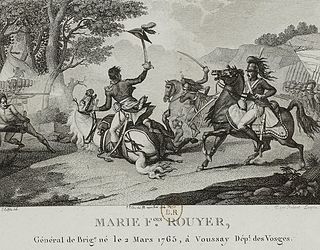 W
WMarie François Rouyer was a French general during the Napoleonic Wars.
 W
WNicholas, Count of Salm was a German soldier and an Imperial senior military commander. His greatest achievement was the defense of Vienna during the first siege by the Turks in 1529.
 W
WMaurice, Count of Saxony was a notable soldier, officer and a famed military commander of the 18th century. The son of Augustus II the Strong, King of Poland and Elector of Saxony, he initially served in the Army of the Holy Roman Empire, then the Imperial Army before finally entering French service. De Saxe became a Marshal and even Marshal General of France. He is best known for his deeds in the War of the Austrian Succession and for his decisive victory at the Battle of Fontenoy especially. He is honoured by the Walhalla Memorial.
 W
WMarshal Johann Matthias Reichsgraf von der Schulenburg was a German aristocrat and general of Brandenburg-Prussian background who served in the Saxon and Venetian armies in the early 18th century and found a second career in retirement in Venice, as a grand collector and patron. His sister was Melusine von der Schulenburg, Duchess of Kendal. His father was Gustavus Adolphus, Baron von der Schulenburg.
 W
WLazarus von Schwendi, Barón de Hohenlandsberg was an Austrian military commander and general in the Imperial Army of the Holy Roman Empire.
 W
WJohann Paul von Werner was chief of the Prussian Hussar Regiment No. 6 ; he also received the Prussian Order Pour le Mérite. Initially in Austrian service, he fought against Spain, France, the Ottoman Empire and against Prussia. One of Frederick the Great's trusted diplomats, Hans Karl von Winterfeldt, recruited him into Prussian service in 1750; subsequently, he fought for Prussia against the Austrians in the Seven Years' War and the War of Bavarian Succession. He was wounded once, and taken prisoner several times. The Prussian playwright Gotthold Lessing modeled the character of the sergeant in his Minna von Barnhelm on Werner.
 W
WWernher von Homberg was a knight in the service Emperor Henry VII, and later of Frederick the Fair. His Minnesang poems are recorded in the Codex Manesse.
 W
WPrince William Henry of Nassau-Usingen was from 1702 to 1718 Prince of Nassau-Usingen.
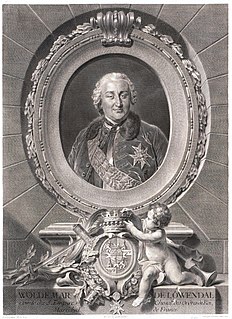 W
WUlrich Friedrich Woldemar Graf von Löwendal was a German officer and statesman.
 W
WWolfgang Julius of Hohenlohe-Neuenstein was a German Field Marshal and the last Count of Hohenlohe-Neuenstein. He was the son of Kraft III of Hohenlohe-Neuenstein and Sophie of Birkenfeld, a daughter of Charles I, Count Palatine of Zweibrücken-Birkenfeld.